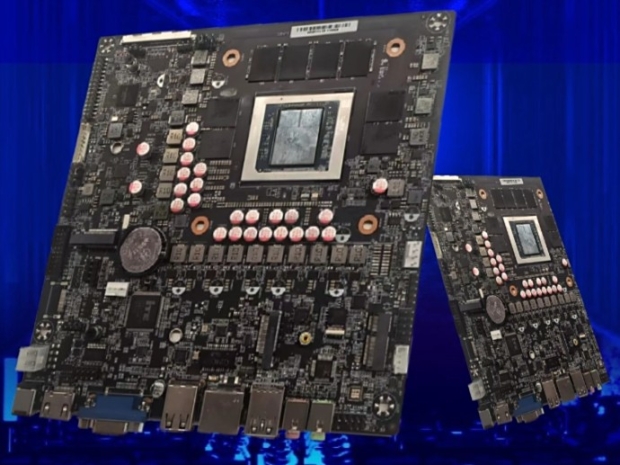The STHT1 board is built around AMD’s FP11 platform and ships with the APU soldered directly to the PCB. You cannot swap processors, but you are getting AMD’s most powerful integrated silicon featuring Zen 5 CPU cores and a beefy RDNA 3.5 GPU all on a single package.
It supports several Ryzen AI MAX options:
- Ryzen AI Max+ 395 with 16 cores, 32 threads, up to 5.1 GHz, 80 MB cache, 40 CUs (Radeon 8060S), and 45 to 120W TDP
- Ryzen AI Max 390 with 12 cores, 24 threads, up to 5.0 GHz, 76 MB cache, 40 CUs
- Ryzen AI Max 385 with 8 cores, 16 threads, up to 5.0 GHz, 40 MB cache, 32 CUs (Radeon 8050S)
- Ryzen AI Max 380 with 6 cores, 12 threads, up to 4.9 GHz, 22 MB cache, 16 CUs (Radeon 8040S)
The Radeon 8060S GPU with 40 compute units performs close to NVIDIA’s RTX 5060 Ti but does not need a separate power supply. With up to 128 GB of soldered LPDDR5X-8000 memory feeding it, there is plenty of bandwidth for gaming, AI workloads, or even running local large language models.
Despite its compact size, the board offers plenty of connectivity. There is dual PCIe Gen 4 x4 M.2 2280 slots for SSDs, a smaller M.2 2230 slot for Wi-Fi, and up to nine USB ports depending on the configuration, including options for USB 3.2 Gen1, Gen2, and Type-C. Display outputs include HDMI, DisplayPort, VGA, COM, and eDP for multi-monitor setups. It also has gigabit LAN, headset and mic ports, and a 19V DC input for compact builds.
Power delivery is solid. Sixunited claims at least 16 VRM phases for the SoC, along with a 4+1 phase setup for the rest of the components. The design can handle the APU’s 120W peak power draw without exotic cooling solutions.
You cannot add a discrete GPU because there are no PCIe slots, but that is not the point. These chips already provide more GPU power than any iGPU seen on a desktop, making them ideal for MoDT (Mobile on Desktop) setups.
The obvious uses include compact AI edge boxes, small workstation builds, or simply an overpowered SFF PC that does not need a dedicated GPU. Pricing has not been confirmed, but MoDT boards like this are usually cheaper than full desktop platforms. It will likely hit APAC markets first before spreading further.
There's no word on pricing or availability yet. Given the history of Mobile on Desktop boards, it should be cheap as chips.




